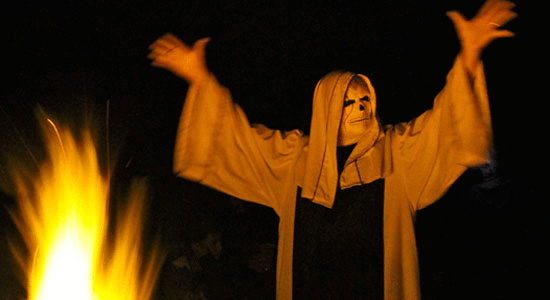
I love cannabis, and I love Humboldt County. Cannabis is a beautiful plant with many beneficial uses, and Humboldt County is a very special place. Humboldt County’s steep, rugged terrain, frequent earthquakes and remote location have protected it from development. As urban sprawl and agriculture displaced California’s native wildlife, many of California’s endemic species retreated to the forested mountains of Humboldt County. Some of these species are now found nowhere else on Earth.

Everyone knows about the redwoods, and that Luna, the famous redwood giant that Julia Butterfly Hill lived in for two years, still stands in Humboldt County, along with some of the last remaining old-growth redwood forest in the world. Roosevelt elk, mountain lions and black bear all make their home in Humboldt County’s wild back-country. Endangered species like the spotted owl, coho salmon, pacific fisher and Humboldt martin all face uncertain futures as the very last populations of these once abundant creatures struggle to survive and reproduce here in the last wild refuge left to them. Rare amphibians like the tailed frog and the giant Pacific salamander testify to the great biodiversity that Humboldt County’s ancient forests have incubated and nurtured through the eons.

Today, Humboldt County’s black market cannabis industry threatens them all. A massive expansion underway in Humboldt County’s underground marijuana industry is having a devastating effect on native wildlife. New roads and clear-cuts for marijuana plantations degrade and fragment vital forest habitat. Fertilizer runoff and road sediment choke salmon streams, Noise and light pollution disrupt wildlife behavior. Rat poison and pesticides kill native wildlife, including essential forest pollinators, and leave a legacy of poison that kills and sickens animals throughout the food web for generations. The movement towards legalization and the deescalation of the War on Drugs has unleashed a monster in Humboldt County.

Humboldt County’s cannabis industry is a product of the War on Drugs, and to this day, the vast majority of the marijuana grown in Humboldt County gets sold on the black market. Humboldt County’s black market growers heed no regulation, pay no taxes, and show no respect for wildlife. The black market cannabis industry has always been a “cut and run” business, and our forests are already littered with the detritus of long abandoned guerrilla grow sites from those bygone days. Today the scale of the grows and the number of grows have increased by orders of magnitude. Humboldt County’s forest habitat cannot withstand this scale of abuse.

Most of Humboldt County’s local environmental groups have chosen to work for better regulation and compliance. However, their efforts are overwhelmed, both politically, and on the ground, by an industry that never asks permission and always wants more. Humboldt County government is dominated by real estate developers who seem as eager to cash in on the green-rush as the growers themselves. The great seal of the Humboldt County Board of Supervisors depicts a redwood log, not a tree, but a log, sawn at both ends, lying on its side. That pretty much sums up the Humboldt County Board of Supervisors attitude towards the environment.

So far, regulation has done nothing to reign-in the out-of-control devastation going on in Humboldt County. That’s why a new group of concerned Humboldt County residents have decided to take their message to cannabis consumers and policymakers directly. This new organization, Habitat Forever, strongly supports the complete legalization of cannabis, but seeks to draw attention to the terrible environmental impacts of Humboldt County’s black market industry. To this end, they’ve produced a five-minute micro-documentary titled Humboldt is Habitat that examines the environmental impacts of Humboldt County’s black market marijuana industry.
Cannabis consumers might be surprised to discover that Humboldt County’s famous marijuana is not grown in Humboldt County soil at all. Instead, all of the soil used to grow marijuana in Humboldt County is trucked-in fresh each year, often hundreds of miles from its source, up steep, winding dirt roads, causing sediment and erosion that choke salmon streams. Cannabis consumers deserve to know the truth about the products they pay for, and now that cannabis has become legal, consumers should be able to choose whether they want to support Humboldt County’s fisher-poisoning, salmon-killing black market growers, or not.

Habitat Forever reminds cannabis consumers that it is still best to grow your own, and that it is more important than ever to know where and how your cannabis was grown. Now that prohibition is ending, Habitat Forever believes that it is vitally important to move the cannabis industry out of Humboldt County’s critical natural habitat, and to make space for the legal cannabis industry in more appropriate locations, like agricultural farmland, urban brown-fields, close to population centers, abandoned mill-sites etc. Humboldt County’s natural beauty and the world’s biological heritage is far too precious to abandon to Humboldt County’s drug war holdovers still squeezing the last few bucks out of the this heinous crime against humanity known as the War on Drugs.

You can see Habitat Forever’s new video, Humboldt is Habitat at youtube and you can visit their website at www.habitatforever.wordpress.com






































































